Share this
NobelGuide- CT guided dental implant placement
on June 21, 2016
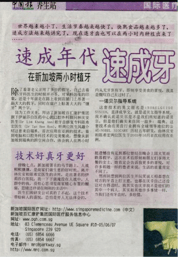 A 60 year old man came into the clinic with a newspaper cutting showing a certain way of doing dental implants and requested for it. The implant company that came up with this technique was marketing direct to the consumers through the mass media. The idea of placing 8 implants on one jaw and attaching a fixed prosthesis onto them immediately was an attractive proposition. To top it off, the whole procedure was to be completed in two hours, with no pain. That was the NobelGuide system. How does is it work?
A 60 year old man came into the clinic with a newspaper cutting showing a certain way of doing dental implants and requested for it. The implant company that came up with this technique was marketing direct to the consumers through the mass media. The idea of placing 8 implants on one jaw and attaching a fixed prosthesis onto them immediately was an attractive proposition. To top it off, the whole procedure was to be completed in two hours, with no pain. That was the NobelGuide system. How does is it work?
NobelGuide, like many other systems now available, is a process of reverse engineering the implant placement. Bearing in mind that what patients really wanted are fixed teeth that look good and function like real teeth, implant treatment planning must begin with the end, i.e. the final prosthesis.
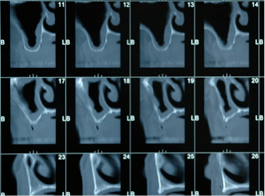
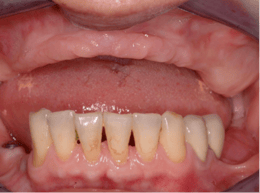
A physical examination and CT scans were done and it showed that he did not have sufficient bone to support implants. As such, prior to any implant placement, the upper jaw needed bone grafting to rebuild the bone mass. Bone was taken from his hip bone and grafted to the upper jaw. Six months later, after the grafted bone had healed and fused with the jaw bone, planning for the new prosthesis started.
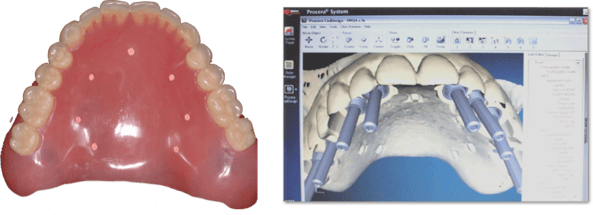
First a new denture was fabricated in accordance to the patient’s preference for size of teeth, shape, amount of lip support, etc. Once this new setup was done, radiopaque markers were embedded into the denture. The patient took a CT scan with the denture in his mouth first and thereafter, we took a CT scan of the denture itself. These CT scan data were entered into the NobelGuide software. Using the models generated on the computer, the implants were placed digitally in the ideal position to support the prosthesis. This plan was then uploaded to the NobelBiocare laboratory in Sweden where a implant placement guide is constructed using computer-aided design and computer-aided manufacturing (CAD-CAM).
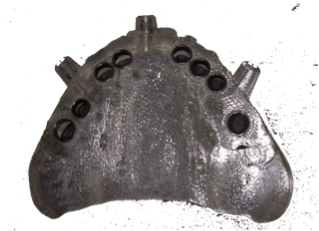 The purpose of the implant placement guide was to ensure that the implants were placed in exactly the same position, angulation and to the same depth as planned on the program. That in turn would ensure that the ideal prosthesis could be constructed on them. With the confidence that the implant positions would be accurately replicated in the patient, we could proceed to make the prosthesis even before the implants were placed.
The purpose of the implant placement guide was to ensure that the implants were placed in exactly the same position, angulation and to the same depth as planned on the program. That in turn would ensure that the ideal prosthesis could be constructed on them. With the confidence that the implant positions would be accurately replicated in the patient, we could proceed to make the prosthesis even before the implants were placed.
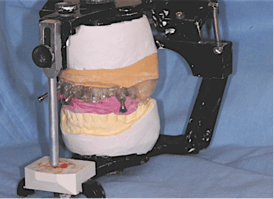
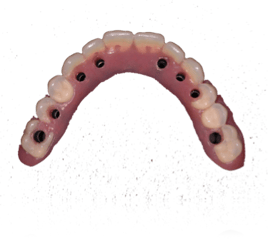
When the prosthesis was ready, the patient came for the actually surgery. The implant placement guide was placed in the mouth and the implants were inserted in accordance with the planned positions. The NobelGuide came with a set of special instruments to enable accurate placement of implants through the guide.
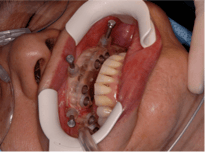
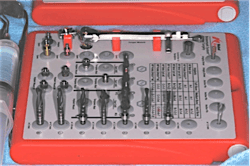
Once all the implants were placed, the guide was removed and the pre-fabricated prosthesis was attached to the implants.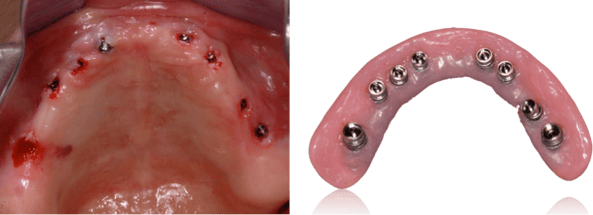
Although it has been marketed as “teeth-in-an-hour”, it does not mean that everything can be completed in one hour. The actual surgery to place the implants using the implant placement guide takes less than an hour because the positions are all pre-planned and controlled. The attachment of the prefabricated prosthesis also takes a very short time because they were made from the same implant placement guide. However, there is a lot of pre-operative planning that takes many hours.
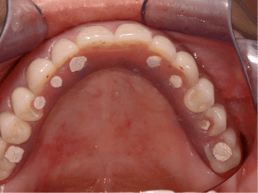
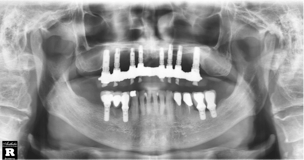
While it has been marketed as a time-saving protocol, it is in reality more time consuming. The usual preoperative planning is needed. In addition, there is the need to make a new diagnostic or planning prosthesis to determine the ideal position of the teeth for the final prosthesis. Furthermore, time is needed for the planning on the software, getting the company’s laboratory in Sweden to manufacture the guide, sending the guide to a Singapore dental laboratory to pre-fabricate a prosthesis, etc. On the average, from the time the patient came for the first consultation to the final prosthesis being fitted, at least two months is needed. If the patient does not have adequate bone like the above patient, an additional six months is needed for the bone graft to heal.
The main advantage of this method of placing implants lies in the minimally invasive nature and the immediate restoration of a fixed prosthesis that the patient can eat and chew on right after surgery.
Share this
- Jaw Surgery (93)
- Dental Implants Singapore (90)
- Orthognathic Surgery (48)
- Replacing Missing Teeth (26)
- Missing Teeth Options (23)
- Underbite (23)
- Bone Grafting (21)
- Costs (18)
- Facial Aesthetics (18)
- Aesthetics (17)
- dental implants (16)
- corrective jaw surgery (15)
- BOTOX (11)
- Dermal Fillers (11)
- Wisdom teeth (10)
- Fixed Implant Dentures (8)
- Loose Dentures Singapore (6)
- Medisave (6)
- sleep apnea (6)
- Braces (5)
- Dental Pain (5)
- Dentures in Singapore (5)
- Loose Teeth (5)
- Tooth Extraction (5)
- jaw deformities (5)
- bimax (4)
- bone graft (4)
- maxillomandibular advancement (4)
- all-on-4 (3)
- bimaxillary protrusion (3)
- chin implant (3)
- facial asymmetry (3)
- full mouth dental implants (3)
- genioplasty (3)
- immediate implant (3)
- removal of an integrated dental implant (3)
- third molars (3)
- wisdom tooth surgery (3)
- My Dentures Don't Fit (2)
- VME (2)
- bone graft healing (2)
- distraction osteogenesis (2)
- medical tourism (2)
- obstructive sleep apnea (2)
- orthodontics (2)
- plastic surgery (2)
- CT guided dental implants (1)
- Double jaw surgery (1)
- Invisalign (1)
- Periodontal Disease (1)
- Permanent Dentures Singapore (1)
- before and after photos (1)
- facial trauma (1)
- fractured dental implant (1)
- oral appliance therapy (1)
- root canal treatment (1)
- veneers (1)
- vertical maxillary excess (1)
- September 2019 (2)
- July 2019 (2)
- May 2019 (2)
- August 2018 (1)
- October 2017 (1)
- September 2017 (2)
- August 2017 (1)
- June 2017 (2)
- May 2017 (4)
- April 2017 (1)
- March 2017 (1)
- February 2017 (3)
- January 2017 (3)
- December 2016 (1)
- November 2016 (2)
- October 2016 (4)
- September 2016 (9)
- August 2016 (5)
- July 2016 (11)
- June 2016 (14)
- May 2016 (6)
- April 2016 (2)
- March 2016 (1)
- January 2016 (7)
- December 2015 (10)
- November 2015 (4)
- October 2015 (9)
- September 2015 (7)
- August 2015 (1)
- July 2015 (6)
- June 2015 (3)
- May 2015 (7)
- April 2015 (5)
- March 2015 (8)
- January 2015 (5)
- December 2014 (7)
- November 2014 (7)
- October 2014 (6)
- September 2014 (8)
- August 2014 (5)
- July 2014 (7)
- June 2014 (8)
- May 2014 (9)
- April 2014 (10)
- March 2014 (6)
- February 2014 (8)
- January 2014 (3)
Subscribe by email
Email subscription


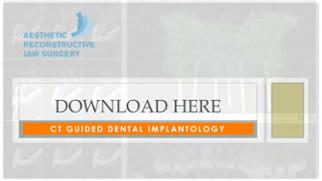

No Comments Yet
Let us know what you think